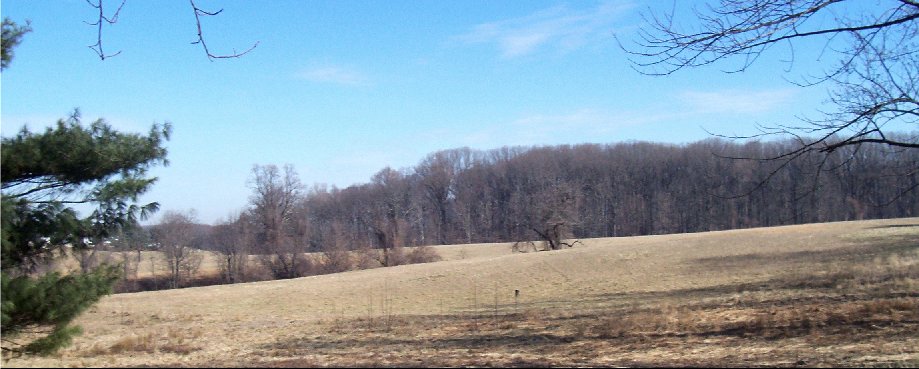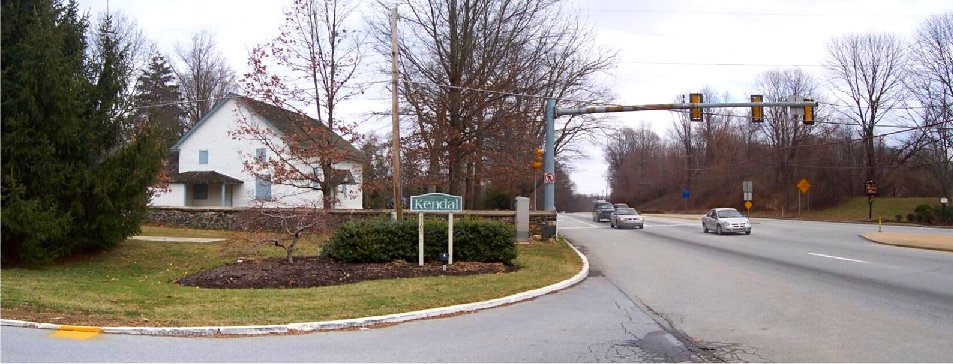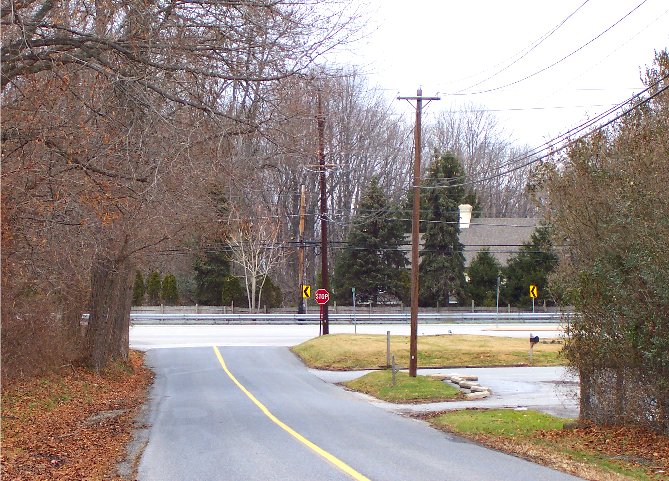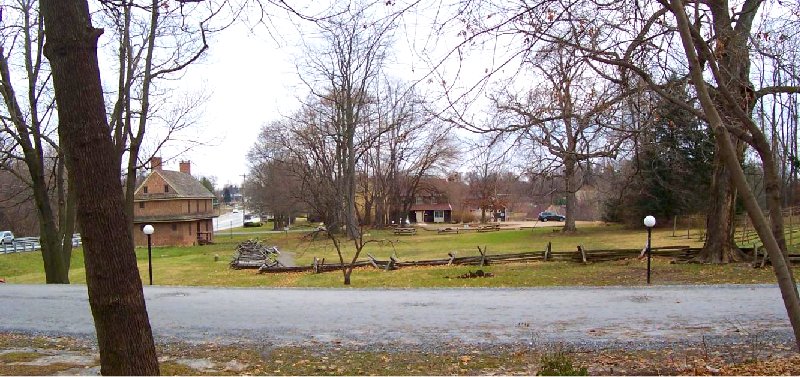
Brandywine
Knyphausen vs. Maxwell
Photos are courtesy of, and copyrighted by, Paul Mullin
Text by Paul Mullin and John Hamill
Cornwallis and Howe began their turning movement to the north at about 5am, and an hour or so later Knyphausen's diversionary column advanced directly east from Kennett Square to Chadds Ford. Wemys's 350 Queen's Rangers, 130 men of Cpt. Patrick Ferguson's Rifle Corps, and sixteen light dragoons took the lead. "Scotch Willie" Maxwell had been sent forward with his 800 light infantry from Washington's army to skirmish with the advancing British. There is some debate as to the exact events and exact locations of some of these skirmishes, which is not unusual with events during the Revolution as they are often shrouded in mystery or myth.

Welsh Tavern Site
About halfway to Chadd's Ford, the British column encountered American cavalry, Baylor's Light Dragoons, near Welsh Tavern. This is a view of the spot where Welsh's Tavern stood at the corner of Baltimore Pike and what is now Route 52. This shot is taken looking SE towards Baltimore Pike, and the British column advanced along the road from right to left. This ground is owned by Longwood Gardens, and the Tavern disappeared years ago.
Mounted American scouts are said to have been consuming alcohol in the tavern when the enemy advance guard marched by the front door. The Americans escaped through the back door and fired at the enemy, but succeeded in wounding one of their own horses which they had abandoned in front of the tavern.

This shot is of some of the terrain near where the tavern stood looking towards Chadds Ford. The British pursued the retreating Americans toward Kennett Meeting House and were met with fire from a company of light infantry which fell back to the support of another company. These two companies then fell back to Kennett Meeting House and joined more of Maxwell's men.

Kennett Meeting House - British View
The British column, advancing along the modern day four-lane Nottingham Road or Baltimore Pike in the direction OPPOSITE of the cars shown above, encountered the American light infantry behind the stone wall in front of Kennett Meeting House, the white building in the photo. Woods on either flank protected the position, and the British were forced to deploy in order to carry the position. To the rear of the Americans, the road forked at modern day Hamorton. Positioned behind the stone wall, the Americans gave a surprise fire and fell back under cover of the hill to the next light infantry position. During the fight the Quakers were conducting a meeting, and one later recalled, "While there was much noise and confusion without, all was quiet and peaceful within."

Lancaster Inn
There was additional skirmishing as the Americans fell back. This is the view from Hickory Hill Rd. south of Baltimore Pike looking west toward the advancing British. The road on far right of the picture is the Baltimore Pike, and just across the pike and hidden behind trees is the Lancaster/Pennsybury Inn. American troops fired at Knyphausen's troops while hiding behind the building on the left of the picture and also from behind the Lancaster Inn.

This is the view from closer to Baltimore Road showing the junction with Hickory Hill Road. The Lancaster Inn is across the pike behind some trees.

White Flag Incident
This is the view of the Baltimore Pike from its south side, the site of the current Pennsbury Township Building and park. Legend has it that this is where some of Maxwell's men waved a white flag to feign surrender, then opened fire on Knyphausen's men, this according to "Brandywine Battlefield: The National Historic Landmark Revisited". Samuel Stella Smith has this occurring closer to Kennett Meeting House. As they believed they were suppressing an illegal rebellion against the legitimate authority of the king, British troops did not consistently take prisoners. This was in keeping with practice of the day, but it alienated much of the American population, and in this case gave the Americans little incentive to fight fairly.

Barnes - Brinton House
On the left is the Barnes-Brinton House, a tavern a few hundred feet north of Pennsbury Township building, looking towards Chadds Ford. Some accounts say that skirmishing occurred here also. The current Baltimore Pike is on the left of the tavern. The original road was on its right side. The owner filed for damages after the battle, claiming that he lost to the British two horses, a cow, and household goods amounting to 87 pounds, 15 shillings.

Maxwell's Last Stand
This a view looking west down Baltimore pike on the extreme right, looking toward the advancing British. On the small hill on the extreme left of the picture is where Maxwell's cannon were positioned. This is the modern site of Cannoneer Circle, which is surrounded by houses. Another hill to the extreme right of the picture behind the car and trees is where Knyphausen's 4 cannons were placed. The 'defile' that Samuel Stella Smith writes about is 30-40 yards behind the trees at the right of the picture. British advanced up defile, flanking Maxwell and forcing him to fall back to the ford.